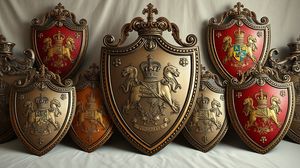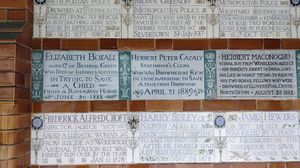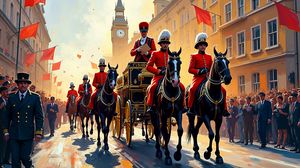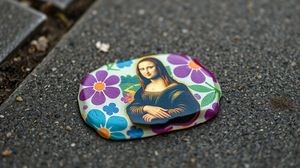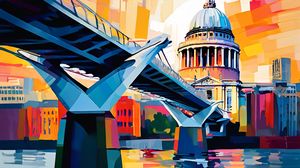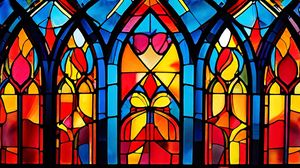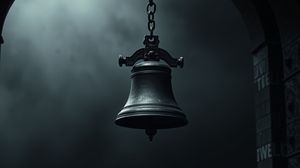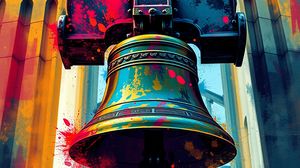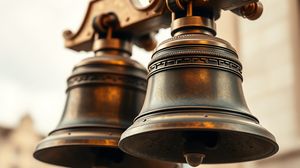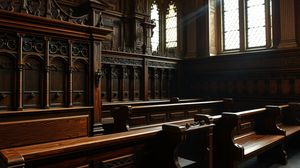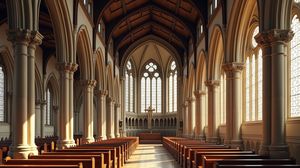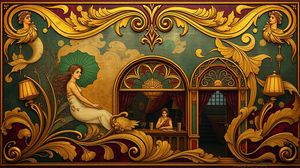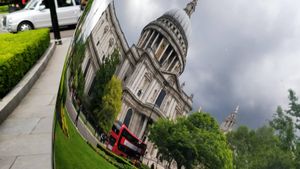
St. Paul's Cathedral stands as an iconic testament to London's rich history and architectural grandeur. Designed by Sir Christopher Wren, it was completed in 1710 as part of the city's reconstruction after the Great Fire of London. Its majestic dome is an iconic feature of London's skyline and has been a symbol of hope and resilience.
A unique feature of St. Paul's is its Whispering Gallery, where the acoustics allow a whispered word on one side of the circular gallery to be clearly heard on the opposite side. This architectural curiosity continues to fascinate visitors to this day.
The cathedral's crypt houses the tombs of some of Britain's most famous historical figures, including Admiral Lord Nelson, the Duke of Wellington, and Sir Christopher Wren himself. Wren's modest tomb bears the engraving, "If you seek his monument, look around you".
During World War II, St. Paul's Cathedral became a symbol of hope when it survived the Blitz largely unscathed, a moment famously captured in a photograph showing the silhouette of the dome surrounded by smoke and fire.
The cathedral's Great West Door is used primarily for important occasions such as state funerals and national services. The massive door has also famously welcomed dignitaries, including royalty and heads of state, over its three-century-long history.
St. Paul's Cathedral has an in-house timekeeper, a unique role that includes maintaining the clock mechanism known as the 'Great Clock'. The clock towers over London with the largest bell being the Great Paul, at one time the largest bell in the United Kingdom.
With an impressive organ inside, St. Paul's boasts one of the most magnificent instruments in the UK. The organ, originally built in 1695, has over 7,000 pipes and has been played for numerous occasions, including the wedding of Charles, Prince of Wales, and Lady Diana Spencer in 1981.

Making the Most of Your Visit:
Try to visit St. Paul's Cathedral early in the morning or late in the afternoon. This way, you'll avoid the biggest crowds and have a more peaceful experience as you explore the cathedral's architecture and history.
Climbing to the top of the dome is a must, despite the many steps involved. You'll be rewarded with breathtaking views of London from the Stone Gallery on your way up as well as the stunning views from the Golden Gallery at the very top. The climb is quite a workout, but well worth it!
Pay special attention to the mosaics on the ceilings in the Cathedral's quire. These often-overlooked masterpieces of color and detail are simply exquisite and provide insight into the craftsmanship that went into building St. Paul's.
Spend some time in the crypt, not just for the famous tombs, but also to see the Order of the British Empire Chapel. It's a serene and solemn space that offers a different perspective on the cathedral's role in British history.
If you're into audio guides or guided tours, St. Paul's offers some that are included with the admission fee. These can really enhance your visit with deep insights and anecdotes about the cathedral and its past. Do check the cathedral's website or ask at the ticket desk for times and availability.

Visiting Times & Costs:
Opening Hours: St. Paul's Cathedral is generally open to visitors from Monday to Saturday from 8:30 AM to 4:30 PM, with last entry at 4:00 PM. The cathedral is closed for sightseeing on Sundays for worship but welcomes visitors to attend services. It is advisable to check for any changes in opening times or closures due to special events or services.
Admission Fees:
- Adults: Approximately £21
- Concessions (students and seniors): Approximately £18.50
- Children (6-17 years): Approximately £9
- Family tickets are available
- Children under 6: Free
It is recommended to check for any updates on pricing or special offers, such as discounted rates for advance online booking.
Accessibility: St. Paul's Cathedral strives to be accessible to all visitors. The main entrance via the North West Crypt Door has step-free access, and there is a lift available to access the crypt. However, due to the historic nature of the building, access to some areas, such as the galleries, is limited and involves a considerable number of steps with no lift access. Assistance dogs are welcome, and there are accessible toilets available.

Address & Map:

Nearby:

